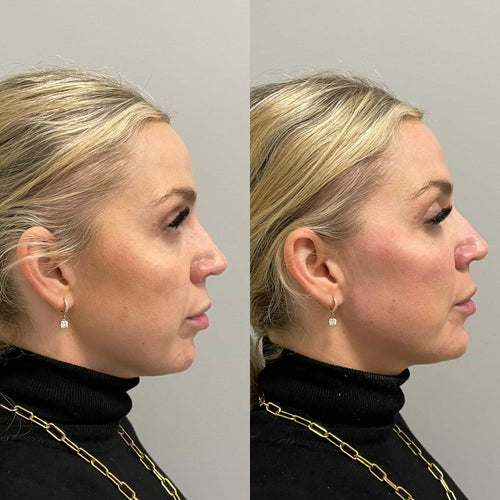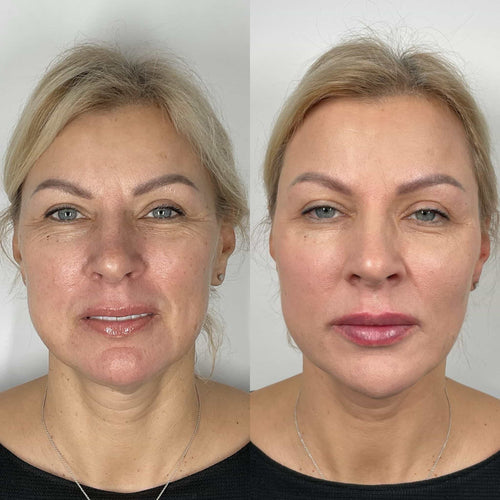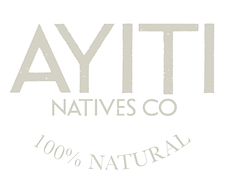Reserve a Dermal Filler Consultation with Dr. Laura Geige Now
Factors Influencing Temple Filler Cost
Type of Implant
Temple filler injections are a popular cosmetic procedure designed to enhance facial contours and create a more youthful appearance. The cost of temple filler varies widely depending on several factors, including:
Book a Consultation for Dermal Fillers with Dr. Laura Geige at It’s Me and You Clinic
• **Geographic Location:** Prices tend to be higher in metropolitan areas and regions with a higher cost of living.
• **Practitioner’s Experience and Expertise:** Highly experienced and sought-after injectors typically charge more due to their specialized skills and reputation.
• **Amount of Filler Used:** The volume of filler required to achieve the desired results directly impacts the overall cost. Larger areas or more dramatic enhancements will necessitate more product, increasing the price.
• **Type of Filler Material:** Different fillers are composed of various substances and have varying costs. Hyaluronic acid fillers are commonly used for temple augmentation and generally fall within a mid-range price bracket. More advanced or innovative fillers may command higher fees.
• **Additional Procedures:** Some patients opt to combine temple filler injections with other procedures, such as Botox or cheek filler, which can increase the overall cost.
• **Consultation Fees:** Initial consultations often incur a separate fee, although some practitioners may waive this if you proceed with treatment.
The type of implant used for temple augmentation is typically not relevant as temple fillers are injectables, not implants. Implants are solid objects surgically placed under the skin, whereas fillers are injectable gels.
Filler Material Choice
Temple filler cost varies significantly based on several key factors.
One major factor is the **type and amount of filler material used**. Different fillers have different prices per unit volume, with hyaluronic acid fillers generally being more affordable than poly-L-lactic acid (PLLA) or calcium hydroxylapatite (CaHA) fillers. The quantity needed will also influence the total cost, as larger areas require more product.
**The experience and reputation of the injector** play a crucial role in pricing. Highly skilled and sought-after injectors often command higher fees due to their expertise, track record, and demand.
**Geographic location** is another factor. Costs tend to be higher in metropolitan areas with higher living expenses and operating costs for medical practices.
**The specific area being treated** can also affect price. Filler treatments targeting more complex or larger areas, like the temples, may cost more than smaller procedures, such as lip augmentation.
Filler Material Choice:
The selection of filler material is a crucial decision that impacts both cost and long-term results.

Hyaluronic acid (HA) fillers are popular for temple augmentation due to their natural-looking results, versatility, and temporary nature, usually lasting 6-18 months. They tend to be less expensive than longer-lasting options.
PLLA, on the other hand, stimulates collagen production and offers more long-lasting results, typically around 12-24 months. CaHA fillers also provide a more permanent effect and are often favored for volume restoration in areas like temples.
It’s important to consult with a qualified and experienced injector to determine the most suitable filler material and treatment plan based on individual needs, preferences, and budget.
Geographic Location
Temple filler cost can vary significantly based on several factors, including geographic location.
Geographic location plays a major role in determining the cost of temple filler. Areas with higher costs of living generally have higher prices for medical procedures, including cosmetic treatments like temple filler injections.
Major metropolitan areas and regions known for their luxury services often command higher prices due to increased demand, specialized practitioners, and operational expenses.
Conversely, rural areas or smaller towns may offer more competitive pricing as the cost of living is lower and competition among providers might be greater.
It’s important to research the average costs in specific geographic locations to get a better understanding of what to expect.
Average Costs Across Different Regions
Secure a Dermal Filler Appointment with Dr. Laura Geige Today
United States Average
Temple fillers are a popular cosmetic procedure to enhance facial features and diminish signs of aging. The cost of temple filler injections varies depending on several factors, including the geographic location, the type and amount of filler used, the experience and reputation of the practitioner, and individual patient needs.
Regionally, the average price for temple filler injections in the United States can fluctuate significantly. Major metropolitan areas like New York City, Los Angeles, and San Francisco tend to have higher costs due to the higher cost of living and greater demand. Smaller cities and rural areas often offer more affordable options.
On a national average, temple filler injections can range from $600 to $1,200 per syringe. This price encompasses the cost of the filler material, professional fees, and any additional expenses like anesthesia or post-procedure care instructions.
It’s essential to remember that this is just a general guideline. It’s always best to consult with a qualified and experienced practitioner in your area for an accurate estimate based on your specific circumstances.
During your consultation, discuss your desired outcome, medical history, and budget. This will help the practitioner recommend the most suitable filler type and amount, providing you with a personalized treatment plan and transparent pricing information.
European Union Average
Determining average costs for procedures like temple fillers across different regions within the European Union requires a nuanced approach due to several factors.
Firstly, pricing variations are influenced by local market conditions, including cost of living, competition among practitioners, and demand for cosmetic procedures.
Larger urban centers often see higher costs compared to smaller towns or rural areas.
Furthermore, the experience and qualifications of the practitioner administering the treatment significantly impact the price. Highly sought-after specialists with extensive expertise may charge more than newer injectors.
The type and volume of filler used also contribute to cost fluctuations.
Popular brands, hyaluronic acid-based fillers, come in different formulations and viscosities, each influencing the final price.
Finally, additional factors such as consultation fees, anesthesia costs (if applicable), and post-procedure aftercare can add to the overall expense.
To obtain a general understanding of average temple filler prices within the EU, it’s helpful to consult resources like online platforms that aggregate cost data from various clinics.
However, remember that these figures represent estimates and individual costs may vary considerably based on the factors mentioned above.
It is always recommended to seek personalized consultations with qualified practitioners in your region to get accurate pricing information tailored to your specific needs and circumstances.
Other Global Regions**
Average costs for dermal fillers can vary significantly across regions due to a multitude of factors. These factors include but are not limited to the cost of living, local competition among providers, demand for the procedure, and the experience and reputation of individual practitioners.
In general, developed countries with higher standards of living tend to have higher average costs for dermal fillers. For example, the United States often has higher prices compared to Europe or Asia. Within regions, urban areas generally see higher prices than rural areas due to increased demand and operating expenses.
Global Regions:
**North America:** The United States, Canada, and Mexico offer a wide range of filler options at varying price points. Prices can fluctuate based on the specific filler type, the practitioner’s experience, and geographic location within the region.
**Europe:** European countries, particularly those in Western Europe, tend to have relatively high prices for dermal fillers due to strong regulations and a focus on quality.

**Asia:** Asian countries offer a more diverse range of price points. Some countries like South Korea and Japan have higher costs due to advanced technology and established medical practices. However, countries in Southeast Asia may have lower average prices.
**South America:** Prices for dermal fillers in South American countries can be quite variable, with some nations having comparable costs to Europe and others offering significantly more affordable options.
**Australia/New Zealand:** These regions tend to have higher average filler prices due to their geographic isolation and stricter regulatory environments.
It’s important to note that these are generalizations, and actual pricing can vary considerably based on individual factors. Always consult with a qualified medical professional in your area for accurate information on the cost of dermal fillers.
Alternatives to Temple Filler
Bone Grafting
Temple filler injections can provide a quick way to achieve fuller temples, but there are other options available that may be more suitable depending on individual needs and preferences.
One popular alternative is hair transplantation. This involves transplanting individual hair follicles from areas of the scalp with dense hair growth to the temples. It’s a surgical procedure that requires multiple sessions and a longer recovery time, but it offers permanent results.
Another option is platelet-rich plasma (PRP) therapy. PRP is created by drawing blood from the patient and separating out the platelets, which contain growth factors that stimulate tissue regeneration. These concentrated platelets are then injected into the temples to promote collagen production and hair growth.
Scalp micropigmentation is a non-surgical technique that involves using tiny needles to deposit pigment into the scalp. This creates the illusion of hair follicles, making the temples appear fuller.
For individuals seeking a less invasive option, certain topical medications containing minoxidil can promote hair growth in the temples. However, these typically require consistent use over an extended period for noticeable results.
Choosing the best alternative to temple filler depends on factors like desired outcomes, budget, time commitment, and individual health conditions. It’s important to consult with a qualified medical professional or cosmetic surgeon to discuss your options and determine the most suitable approach for you.
Hairline Advancement Surgery
Temple fillers can be a popular choice for addressing receding hairlines, but they’re not the only option. Here are some alternatives to consider:
-
Hairline Advancement Surgery (Follicular Unit Transplantation – FUT or Follicular Unit Extraction – FUE)
This surgical procedure involves transplanting hair follicles from a donor area (usually the back of the head) to the temples. It provides a permanent solution with natural-looking results.
-
Platelet Rich Plasma (PRP) Therapy
Involves injecting concentrated platelets from the patient’s blood into the scalp, stimulating hair growth and potentially reversing thinning.
-
Low-Level Laser Therapy (LLLT)
Uses laser light to stimulate hair follicles and promote growth. It may be used in conjunction with other treatments.
-
Medications:**
Finasteride (Propecia) is an oral medication that can slow down hair loss in men. Minoxidil (Rogaine) is a topical solution that can stimulate hair growth in both men and women.
-
Scalp Micropigmentation (SMP)
A non-surgical procedure that involves depositing tiny pigment dots onto the scalp, creating the appearance of a shaved head or closely cropped hair. It can camouflage thinning areas.
Choosing the right alternative depends on individual factors like hair loss severity, desired outcome, budget, and personal preferences. Consult with a dermatologist or hair restoration specialist to determine the most suitable option.
Carmen Alexandra Alabama Sig Delt Live Your Vows Cleveland Relationship Therapy
- Alluzience Longer Lasting Botox Near Chipstead, Surrey - May 2, 2025
- Botox Upper Face Wrinkles In Hampton, Surrey - May 1, 2025
- Aesthetic Cosmetic Injectable Treatments Near Shalford, Surrey - May 1, 2025
